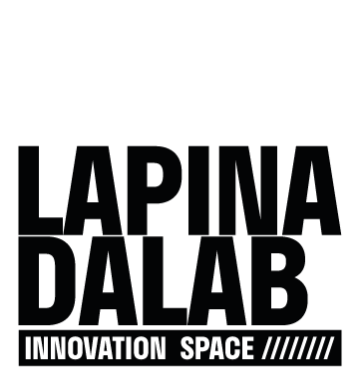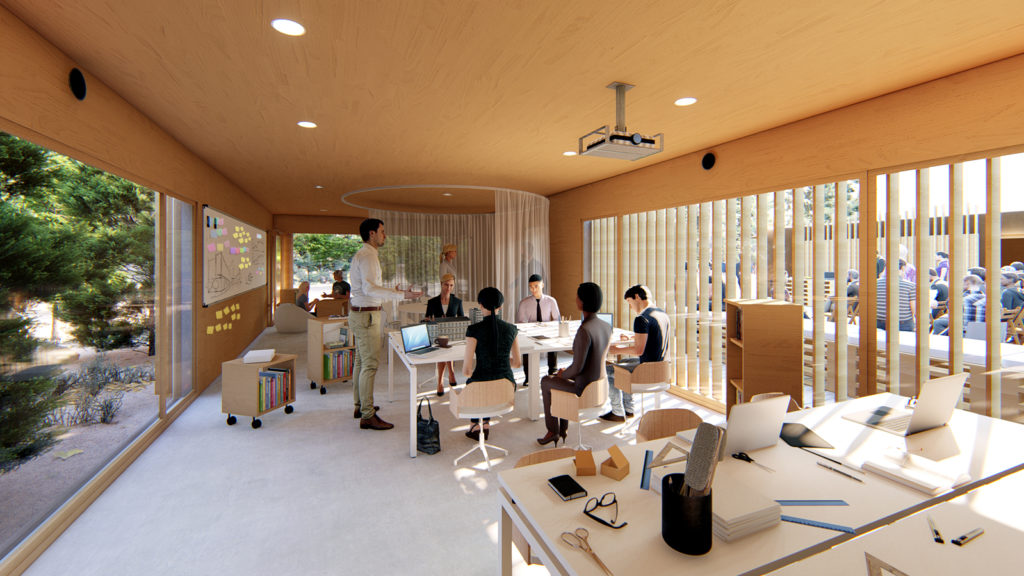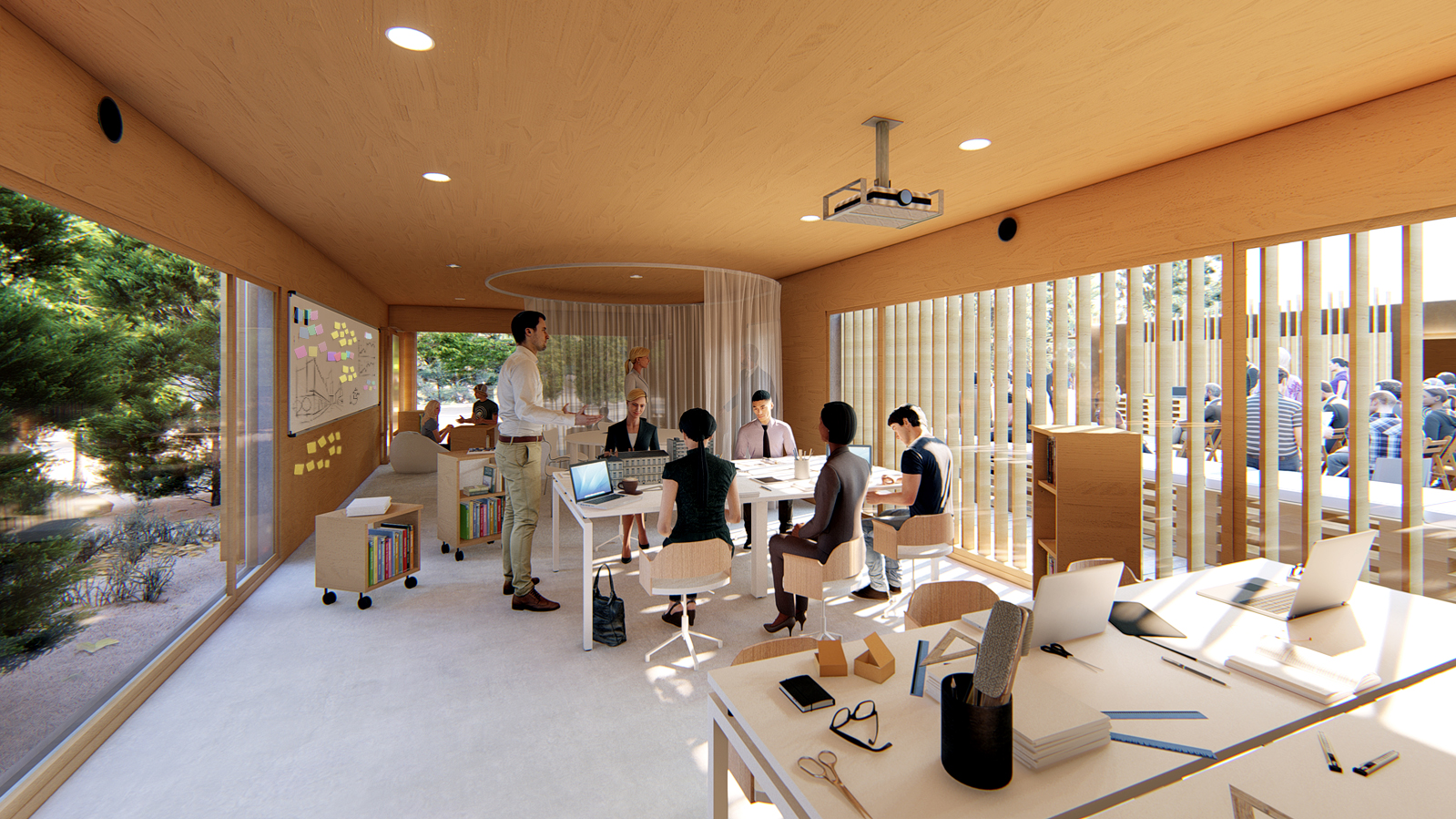We strongly believe that the best fights to reduce our dependency to fossil fuels will be won at the local/city levels.
One of the cities at the forefront of climate change adaptation is Valencia in Spain.
https://eurocities.eu/stories/a-climate-neutral-valencia/
In a suburb of Valencia, Zubi Labs created La Pinada Lab, an open innovation centre (900 m2) focused on the sustainability of the urban environment and future living. It is the first eco-district that is co-created by its residents. It is located in the Paterna district (https://www.barriolapinada.es/en/)


In a recent article, it highlighted their approach to co development of solutions addressing climate degradation due to fossil fuel pollution. (https://lapinadalab.com/en/the-importance-of-a-bold-city-council/)
The innovation centre La Pinada Lab works on two premises.
One: Reality is complex, and to develop better solutions to our problems, we must cooperate.
Two: When acting on the urban environment, it does not make sense to separate the public and private domains. In this article, the lab explores the role of city councils. It’s a call for local courage and for innovative public-private partnerships.
For decades, there has been a model of innovation called Open Innovation, which was proposed by Henry Chesbrough as an alternative to the secrecy and isolation of 20th century research laboratories, university departments and corporations.
At that time, it was a challenging path that only the most alternative companies took, as it involved sharing knowledge, resources or processes with other entities and this was quite scary. ‘How am I going to show a stranger what I know (and what I don’t know)?’, thought the more conservatively-minded.
Today, however, it has become the only sensible way to solve the challenges we face.
Our reality is systemic. The world is made up of systems of systems, with innumerable cross-connections and nobody has a complete and permanent perspective on things. This makes it essential to rely on each other to develop new ideas.
This perfectly echoes a 2016 Editorial by Jinhyo Joseph Yun –
The Smart City as an open innovation knowledge city
This was further refined in 2019 by the same author, in Smart City 4.0 from the Perspective of Open Innovation as Smart City, where the
Smart City = Size of city x connectivity x entrepreneurship
Source:
https://www.mdpi.com/2199-8531/5/4/92
Climate KIC Opening-up the Sustainable city
Accenture A resilient future for cities
– Part 5 Co-creation
Involving citizens in the creation process will result in creating a more robust service through a diversity of thinking and experiences.
Getting started:
Looking at sustainability needs to be looked at from energy, water savings and comfort perspectives and these 3 angles will become increasingly vital for us to adapt to climate change due to fossil fuel environmental degradation.
In our early discussions with La Pinada Lab, it quickly became clear that whatever we were developing to test at La Pinada needed to be easy to install by non-technical people. Users also wanted to provide insights in clear and concise way so that decision makers could quickly make informed decision regarding benefits to either speed up deployments or look for other solutions with better ROI and benefits.
Since late 2020, we deployed a wide mix of LoraWAN and NB IoT sensors for a variety of parameters useful to lower a building’s carbon footprint while maximizing comfort: CO2, light, presence, people counter, noise, temperature, humidity, electrical power consumption. Below is a screenshot of our very first Digital Twin representation for La Pinada Lab.
We have only began to explore benefits of co-created solutions and the next systems to benefit from IoT sensors and AI/ML optimization are related to solar power generation, storage battery temperature, incoming total solar energy forecast etc…..
Future Smart City approaches.
Obtaining IoT data to feed Digital Twins will lead to more decarbonization options based on ‘systems of systems’ engineering. For example, a very interesting neighborhood level CO2 footprint modelling methodology was described in ‘Combined Greening Strategies for Improved Results on Carbon-Neutral Urban Policies. Buildings’
The UPV team ‘developed an easy and accurate climate model to be used for evaluating
energy performance at the city level. The proposed model has been implemented together
with a joint digital twin for a neighbourhood allowing future developments for the impact
assessment of urban policies.’
A Digital Twin for the entire Benicalap neighborhood graphically presents the CO2 footprint for private
energy consumption, also including the embedded CO2 footprint from the construction
phase, and can quickly determine the benefits of scenarios based on different Nature Based Solutions (NBS) combined with urban dynamics from building renovations and vegetation.
Conclusion:
The recent failure of the Cop 27 Summit demonstrates that a ‘global’ approach is dysfunctional, outdated and unsuitable to tackle the enormous challenges we face. To be quickly implemented and make a difference, solutions will need to be local and the increased environmental activism demonstrates that a new generation of future leaders is ready to adopt innovative and consensual approaches.
There is no doubt that partnerships built around easy to use IoT end-to-end co-created solutions and Digital Twins will be key to making neighborhoods in cities of all sizes more resilient.
Further reading:
Orozco-Messana, Javier & Iborra-Lucas, Milagro & Calabuig Moreno, Raimon. (2022). Combined Greening Strategies for Improved Results on Carbon-Neutral Urban Policies. Buildings. 12. 894. 10.3390/buildings12070894
https://www.mdpi.com/2075-5309/12/7/894/pdf
‘Now or never’- how technology and collaboration can accelerate decarbonization (WeForum.org May 2022)

